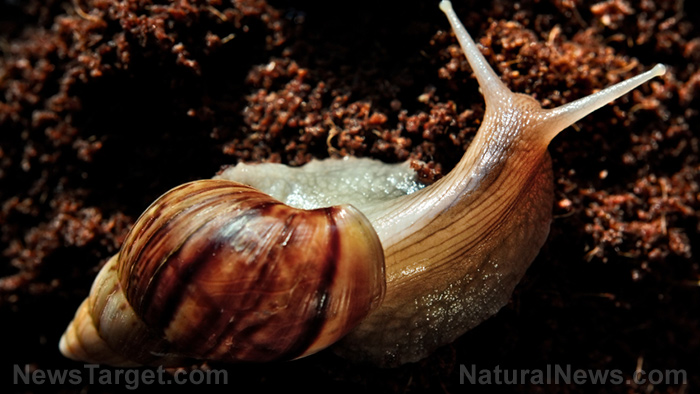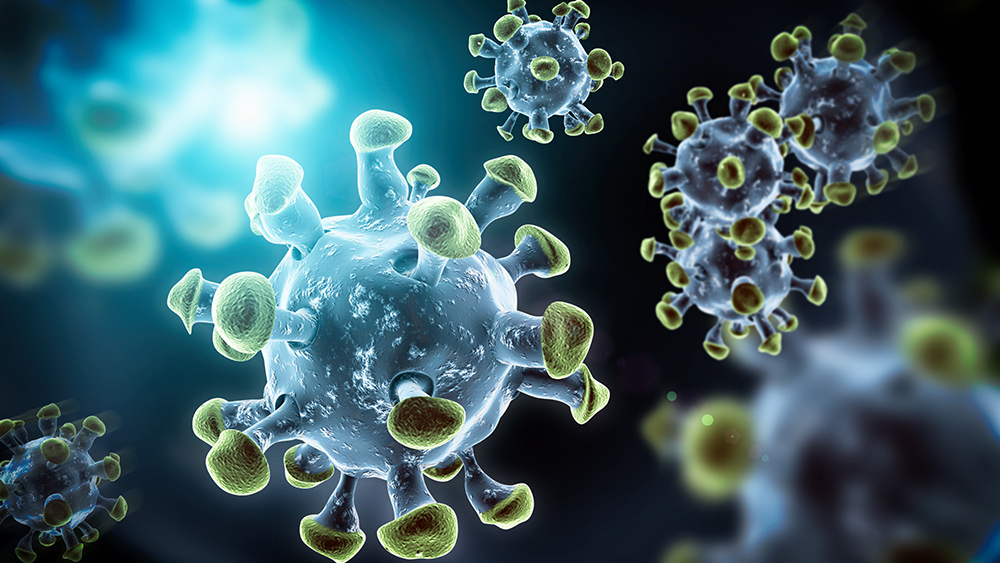Invasive half-snails in Hawaii are spreading brain parasites among people
03/27/2020 / By Janine Acero

Parasites can be a massive headache in a microscopic size, and in the case of a certain parasitic worm, the headache it causes is literal – the rat lungworm parasite can wreak havoc on a person’s brain, and can even cause major neurological problems. Now, recent findings by the Hawaii State Department of Health indicate that the parasite may be infecting more people in Hawaii than previously thought, and it may be caused by ingesting an unassuming yet invasive creature.
Parasitic worm infection caused by eating semi-slugs
Cases of rat lungworm disease are common in tropical parts of Asia, such as Thailand and Taiwan, with some cases found in Australia, Africa and the Caribbean. The disease was first reported in Hawaii around 1959.
Health officials in Hawaii have been required by the state’s Department of Health to track the spread of the disease and report the cases beginning in 2007. Since then, 82 cases (two of which were fatal) had been reported through 2017. The infected individuals consisted of residents, visitors and tourists.
The researchers found that people can contract the disease by ingesting infected slugs or snails on unwashed fresh produce, either by mistake – the creatures are so tiny that they’re unnoticeable on fruits or vegetables – or on purpose, such as on a dare.
However, the researchers found it difficult to determine the exact exposure responsible for many of the cases in the study.
David Johnston, an epidemiologist in the disease outbreak control division of the Hawaii State Department of Health, explained that potential sources of the infection in Hawaii include the Cuban slug, the giant African snail, and the marsh snail – all of which are known to carry the parasite.
However, the researchers took particular interest in an invasive species of semi-slug, Parmarion martensi. These half-snails are known to be fast climbers and can get into many parts of the house like sinks and water tanks. Moreover, the researchers found these semi-slugs to carry high numbers of the rat lungworm parasite.
Since the conclusion of the study, new cases have been reported in Hawaii – 10 in 2018 and five in 2019. Nearly 80 percent of the reported cases needed to be hospitalized. The most common symptoms in young children included fever, vomiting and irritability, while older kids to adults exhibited headaches, muscle or joint pain, tingling sensations in the skin, and stiffness of the neck.
The disease spread through the Big Island, Maui, Kauai and Oahu. However, the scientists suspect that they underestimated the true prevalence of the brain-infecting parasite due to some cases showing no symptoms or only mild ones, thus seeing no need for medical attention. (Related: Creepy life-threatening parasites straight out of science fiction – only they’re real: Tips for avoiding these 6 nightmares.)
Fast facts on rat lungworm disease
Angiostrongyliasis, or rat lungworm disease, is caused by the parasitic nematode (roundworm), Angiostrongylus cantonensis. Adult A. cantonensis are found exclusively in rodents, but infected ones can pass the larvae in their feces, which can be ingested by “intermediate hosts” such as snails, slugs and other small animals like freshwater shrimp, land crabs and frogs.
Angiostrongyliasis affects the brain and spinal cord and is the most common cause of a rare type of meningitis called eosinophilic meningitis.
A person with angiostrongyliasis will experience severe headache, stiff neck, tingling or painful sensations in the skin or extremities, low-grade fever, nausea and vomiting, as well as light sensitivity and even temporary paralysis of the face. Symptoms usually last between two to eight weeks, but in some cases, the symptoms have been reported to have lasted for longer periods.
There is no specific cure for angiostrongyliasis, and infected individuals usually recover without treatment. However, in rare cases, the disease can lead to neurological problems and even death.
Moreover, while humans cannot transmit the infection to other humans, they can get infected for as many times as they are exposed to food contaminated with A. cantonensis.
To prevent angiostrongyliasis and other foodborne parasitic infections, make sure that your food is properly cooked, avoid eating raw or uncooked food especially when traveling, wash fresh produce thoroughly, wear gloves when preparing raw food for cooking, and wash your hands before and after meal preps.
Sources include:
Tagged Under: angiostrongyliasis, animals, brain function, brain parasite, Diseases, Ecology, environment, eosinophilic meningitis, Hawaii, infections, outbreak, parasites, parasitic nematode, rat lungworm, rats, raw food, rodents, roundworm, semislug, slugs, snails, undercooked food
RECENT NEWS & ARTICLES
COPYRIGHT © 2017 ENVIRON NEWS



















